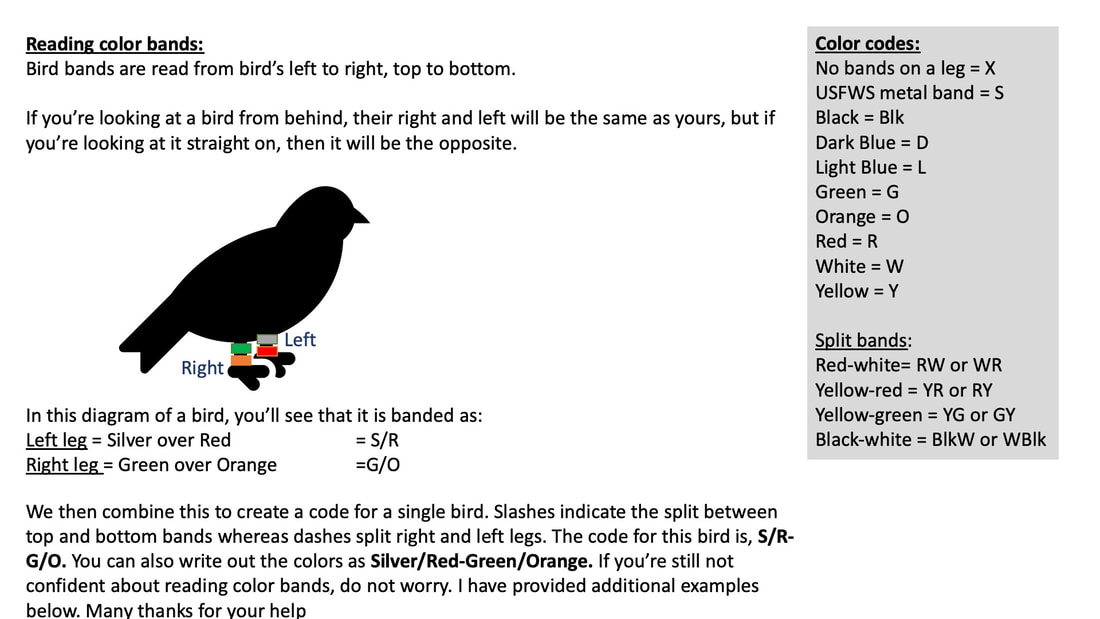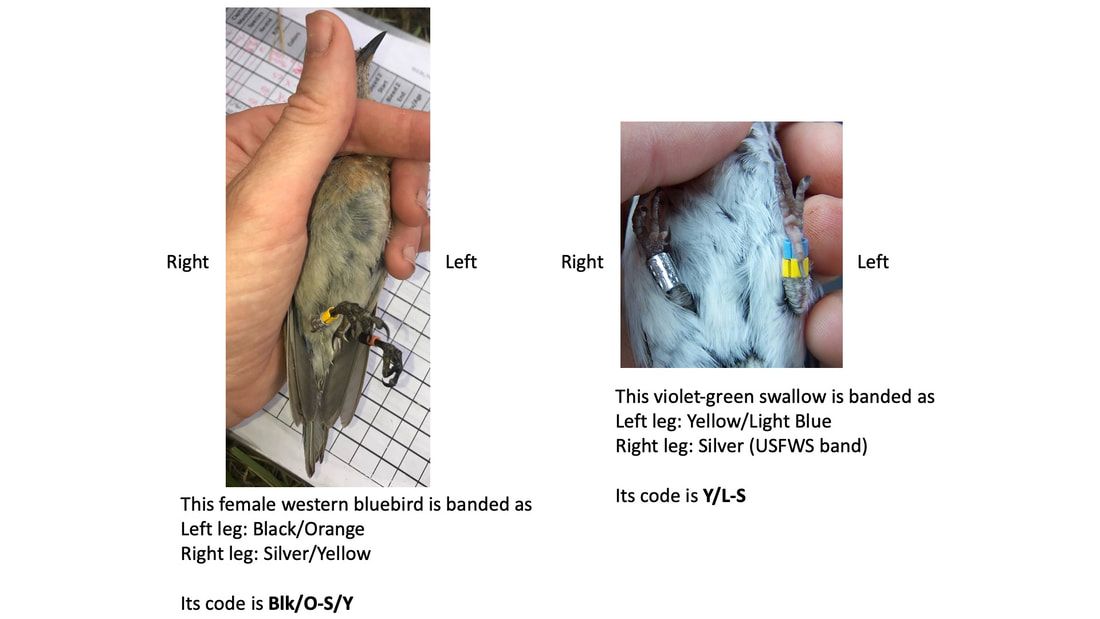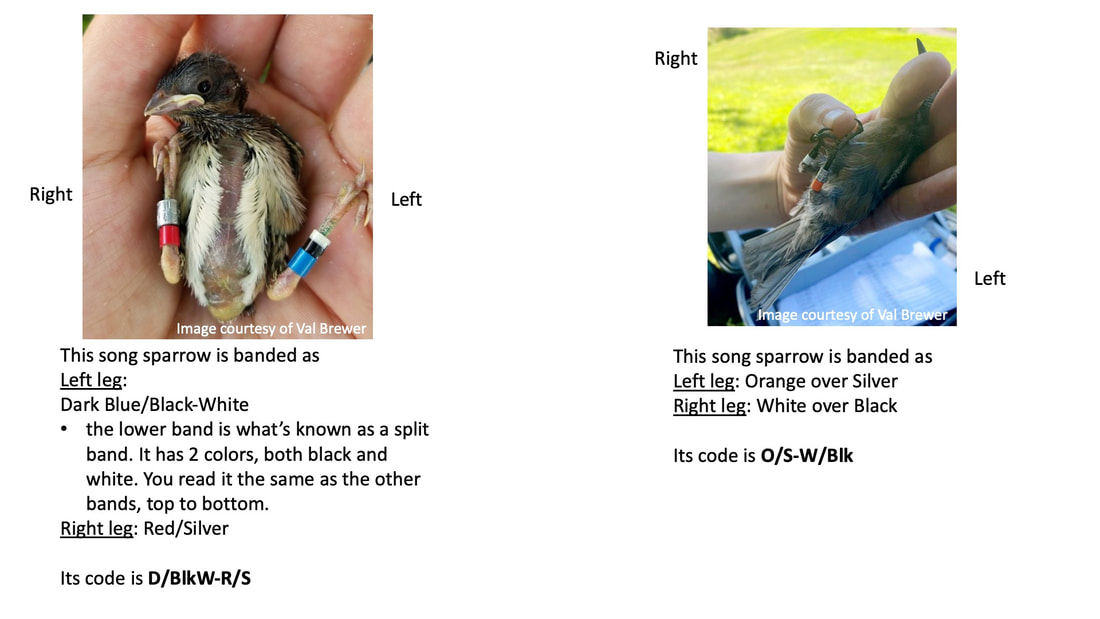Reading color bands:
Banding birds is important way to monitor bird populations, determine annual survival rates, and assess productivity. In the United States, the USGS Bird Banding Lab manages the use of bands. The banding lab distributes a series of metal bands in different sizes that have unique numbers on them. When someone recovers a band (either through recapture or recovering a dead bird), they should report it to the banding lab. These data are shared with the researchers that captured the bird and input into the banding database for other researchers to use.
In certain types of studies, such as several that I'm conducting in the Willamette Valley, Oregon, we need to be able to differentiate between individual birds without having to recapture them. To do this, we color band birds. We put unique color band combinations on their legs and, when we re-sight these birds, we can tell who they are. Since 2020, my collaborators and I have banded almost 500 western bluebirds and house wrens throughout Benton County. Many of these birds are color banded. We'll also be color banding several species of warbler, sparrows, Hutton's vireo, evening grosbeak, and varied thrush over the next year. If you see a color banded bird, please report it to the banding lab. Please provide the species, band combination of the bird, the date, time, and the location that you saw the bird (you can get latitude and longitude of your location in Google Maps or a general location), what habitat is was in, if it was alone or in a pair or a flock, and what was it doing. Collaborators and I are using this information to improve the precision of survival estimates, and to better understand how birds use habitat across the annual cycle.
If you're not sure how to read color bands, I've provided a brief tutorial below:
In certain types of studies, such as several that I'm conducting in the Willamette Valley, Oregon, we need to be able to differentiate between individual birds without having to recapture them. To do this, we color band birds. We put unique color band combinations on their legs and, when we re-sight these birds, we can tell who they are. Since 2020, my collaborators and I have banded almost 500 western bluebirds and house wrens throughout Benton County. Many of these birds are color banded. We'll also be color banding several species of warbler, sparrows, Hutton's vireo, evening grosbeak, and varied thrush over the next year. If you see a color banded bird, please report it to the banding lab. Please provide the species, band combination of the bird, the date, time, and the location that you saw the bird (you can get latitude and longitude of your location in Google Maps or a general location), what habitat is was in, if it was alone or in a pair or a flock, and what was it doing. Collaborators and I are using this information to improve the precision of survival estimates, and to better understand how birds use habitat across the annual cycle.
If you're not sure how to read color bands, I've provided a brief tutorial below:



